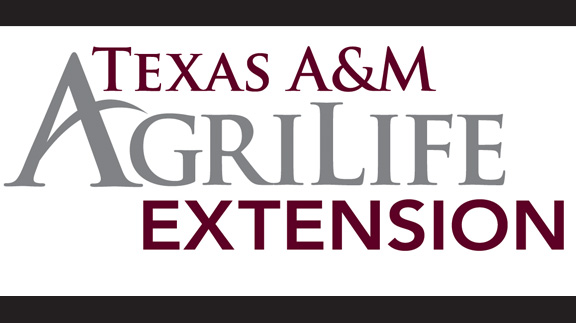Farm & Ranch
North Texas Small Farm and Ranch Management School April 7

North Texas Small Farm and Ranch Management School
Cooke County-Class 5, Setting Stocking Rates, Pasture and Livestock Management
Texas A&M AgriLife Extension Service in Cooke County would like to invite you to Class 5 of the North Texas Small Farm and Ranch Management School, Thursday, April 7, 2016 from 8am to 1pm, at the North Central Texas College Building 100(formerly known as The Little Theatre), 1525 W California St, Gainesville, Tx. This School is a multicounty effort in conjunction with the Samuel Roberts Noble Foundation in Oklahoma. The topics for this class include Pasture Management, Grazing Systems, Drought Plans & Stocking Rates and will be presented by Noble Foundation Consultants Steven Smith, Hugh Aljoe and Rob Cook. Topics on General Livestock Management, Parasite Control, Vaccinations, Feeds and Supplements, Growth Hormones and Antibiotic use, will be presented by Cooke County Ag Agent Marty Morgan, with interaction between a Producer Panel and the Audience to discuss and answer questions anyone may have about Farm and Ranch Management.
The cost will be $15 with a meal sponsored by the Red River Farm Co Op, Gainesville, Tx.
2 General CEU’s will be given for Private Pesticide Applicators.
Please pre-register by April 4th by calling the Cooke County AgriLife Extension Office at 940-668-5412 or send an email to [email protected] We need an accurate meal count for lunch.
We hope to see you there,
Marty Morgan, Cooke County Ag Agent
301 S Chestnut, Gainesville, Tx 76240
940-668-5412
North Texas Small Farm & Ranch School flyer
Farm & Ranch
Managing Show Cattle Through The Winter

By Heather Welper
Husband and wife duo, Heather and Calvin Welper, are the Co-Owners and Operators or Two C Livestock, located in Valley View, Texas.
The pair’s operation has a show cattle focus where they raise and sell purebred heifers of all breeds and club calf Hereford steers.
When it comes to show cattle, the Welpers know a thing or two including how to prepare for the cold winter months and the Texas major show season run.
To read more, pick up a copy of the November edition of North Texas Farm & Ranch magazine, available digitally and in print. To subscribe by mail, call 940-872-5922.

Farm & Ranch
Double M Ranch & Rescue

By Hannah Claxton, Editor
As the sun rises each day, so do the dozens of mouths that Meghan McGovern is responsible for getting fed. Rather than the sounds of a rooster crowing, McGovern hears the bellows and bleats of a variety of exotic deer, the chortle of kangaroos, the grunts of water buffaloes, and the chirps of a lemur.
Nestled against the banks of the Red River, the Double M Ranch and Rescue, with its high game fences and deer sprinkling the landscape,s its in stark contrast to the surrounding ranches.
“Having deer is kind of like eating potato chips- you can never actually have just one,” said McGovern with a laugh.
McGovern has several herds to take care of- fallow deer, axis deer, water buffalo, goats, and bison. In smaller numbers, there’s also a few kangaroos, a lemur, a potbelly pig, a pair of zebras, a watusi, and a few horses.
To read more, pick up a copy of the November edition of North Texas Farm & Ranch magazine, available digitally and in print. To subscribe by mail, call 940-872-5922.

Farm & Ranch
Acorn Toxicity

By Barry Whitworth, DVM, MPH
With the prolonged drought, most pastures in Oklahoma end up in poor condition. With the lack of available forage, animals may go in search of alternative foods.
If oak trees are in the pastures, acorns may be a favorite meal for some livestock in the fall. This may result in oak poisoning.
Oak leaves, twigs, buds, and acorns may be toxic to some animals when consumed.
To read more, pick up a copy of the November edition of North Texas Farm & Ranch magazine, available digitally and in print. To subscribe by mail, call 940-872-5922.

-

 Country Lifestyles2 years ago
Country Lifestyles2 years agoScott & Stacey Schumacher: A Growth Mindset
-

 Country Lifestyles8 years ago
Country Lifestyles8 years agoStyle Your Profile – What your style cowboy hat says about you and new trends in 2017
-

 HOME8 years ago
HOME8 years agoGrazing North Texas – Wilman Lovegrass
-

 Outdoor10 years ago
Outdoor10 years agoButtercup or Primrose?
-

 Equine1 year ago
Equine1 year agoThe Will to Win
-

 Country Lifestyles5 years ago
Country Lifestyles5 years agoAmber Crawford, Breakaway Roper
-

 Country Lifestyles9 years ago
Country Lifestyles9 years agoJune 2016 Profile – The man behind the mic: Bob Tallman
-

 Country Lifestyles8 years ago
Country Lifestyles8 years agoDecember 2016 Profile, Rusty Riddle – The Riddle Way




